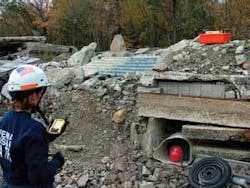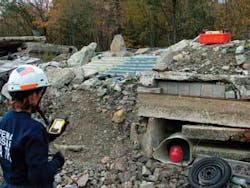By Courtney E. Howard
SALEM, N.H. - UltraVision Security Systems (UVSS) in Salem, N.H., has tapped some of the latest technological advancements in motion detection and ultrawideband (UWB) RF sensors to military personnel and first responders locate living victims in disaster wreckage.
The LifeLocator from UVSS uses motion-detection sensors and UWB technology to quickly find trapped victims who are moving and breathing. In fact, the unit is capable of detecting motion as far away as 20 feet, and registering breathing as far away as 15 feet from the sensor.
The growing occurrence of natural disasters, acts of terrorism, and other life-threatening and wreckage-inducing events has contributed to an increased need for technology such as the LifeLocator that aims at reducing the number of human casualties.
Given the magnitude of terrorist events and natural disasters of late, today’s technology companies are focusing a growing amount of research and development efforts in this area.
The portable, ruggedized LifeLocator sensor system measures 18 by 18 inches and weighs 21 pounds. The sensor sends its detection data to a handheld personal data assistant (PDA). The distance between the sensor and the victim is displayed on-screen, as is a red circle and black square, which respectively indicate breathing and motion.
UWB technology, considered by some to be one of the most promising innovations of our time, enables systems to transmit signals, which are difficult to detect, across a wider frequency than conventional systems.
UWB technology is known by many names-including nonsinusoidal communication technology, impulse radar, ground-penetrating radar, impulse radio, baseband pulse technology, and disruptive radio-frequency (RF) technology-is garnering considerable interest for military and commercial applications, given its low power requirements, low cost, low interference, and high precision and data rates.
UWB technology is poised to change security and life safety radically, according to UVSS president Dennis Johnson.
“In the future, UWB will be a foundation technology for a multitude of consumer-focused communication products,” says Johnson. “The future is here and now for UWB-based search and rescue and security applications.”
“This technology isn’t just theory,” remarks Bill Lozon, vice president of sales and marketing for UVSS. “Our UWB prototypes have been successfully field tested and approved by the Israeli military.”
For more information, visit www.ultravisionsecurity.com.




